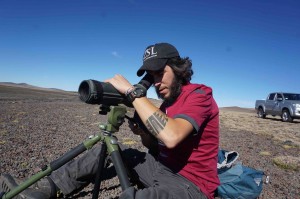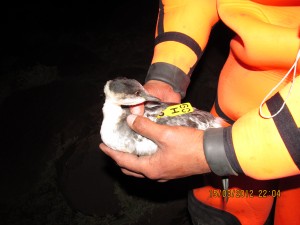 Growing up in the Buenos Aires province of Argentina, provided me with easy access to some of the world’s most incredible natural environments. This connection with nature generated my interest in the world of birds, almost reaching a level of “fanaticism”. My intrigue in Argentinian birds, led me to the local conservation NGOs, Fundación Vida Silvestre and Aves Argentinas/AOP, where I have been an active member ever since, collaborating on several research and conservation projects. I have held different positions, as a librarian at first, as an editor of Nuestras Aves later and nowadays, as a board member. Due to my interest in ornithology and my continued work for the NGOs, I started to join several ornithological and conservation institutions, such as the Neotropical Bird Club , the Sociedad de Ornitolgía Neotropical and the Asociación Ambiente Sur. In 2000, I started studying biology at the Faculty of Natural Science and Museum, National University of La Plata. Since then, I managed to combine bird watching with science, especially in areas such as biogeography, bioacoustics and conservation biology. Most of the projects in which I participated at that time were about birds from tropical and subtropical areas. However, guided by the urge to apply biology to conservation locally, I became involved in the “Hooded Grebe Project” in January 2010.
Growing up in the Buenos Aires province of Argentina, provided me with easy access to some of the world’s most incredible natural environments. This connection with nature generated my interest in the world of birds, almost reaching a level of “fanaticism”. My intrigue in Argentinian birds, led me to the local conservation NGOs, Fundación Vida Silvestre and Aves Argentinas/AOP, where I have been an active member ever since, collaborating on several research and conservation projects. I have held different positions, as a librarian at first, as an editor of Nuestras Aves later and nowadays, as a board member. Due to my interest in ornithology and my continued work for the NGOs, I started to join several ornithological and conservation institutions, such as the Neotropical Bird Club , the Sociedad de Ornitolgía Neotropical and the Asociación Ambiente Sur. In 2000, I started studying biology at the Faculty of Natural Science and Museum, National University of La Plata. Since then, I managed to combine bird watching with science, especially in areas such as biogeography, bioacoustics and conservation biology. Most of the projects in which I participated at that time were about birds from tropical and subtropical areas. However, guided by the urge to apply biology to conservation locally, I became involved in the “Hooded Grebe Project” in January 2010.

Due to the lack of knowledge of this unique species, in 2011 I decided to undertake a PhD that combined research on the species as well as vital conservation work. My thesis relates to the factors that affect the viability of the Hooded Grebe (Podiceps gallardoi) populations, including aspects of their genetic make up and reproductive success. However, the problems that this endangered species is facing are forcing me to expand the research topics, including an assessment of the populations of exotic predators, which are one of the major causes for this species decline.

After five seasons of research I realized that there is still a major gap in the knowledge of the Hooded Grebe – the movements and migration behaviour. This urgency led to me to apply to the EDGE of Existence programme at the Zoological Society of London. Within the next two years I will use cutting-edge techniques to assess the migratory behaviour and the species movements within their winter and summer habitat. Lastly, I will use citizen sciences and social activities to set up an early detection programme for injured or dead individuals during migration. This project hopefully will discover valuable information to ensure the conservation of this critically endangered EDGE species.